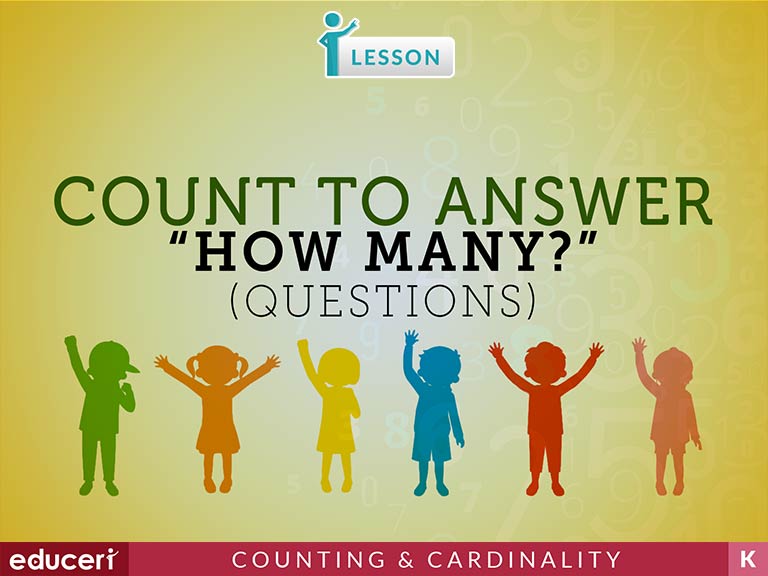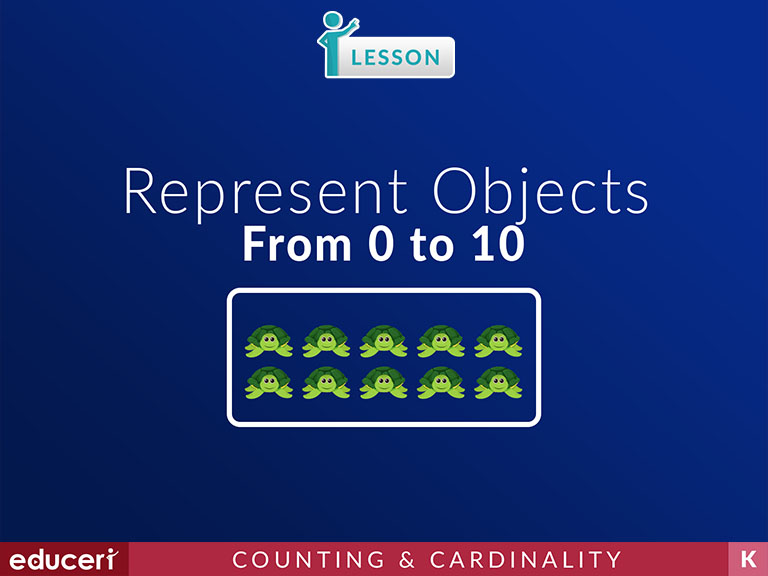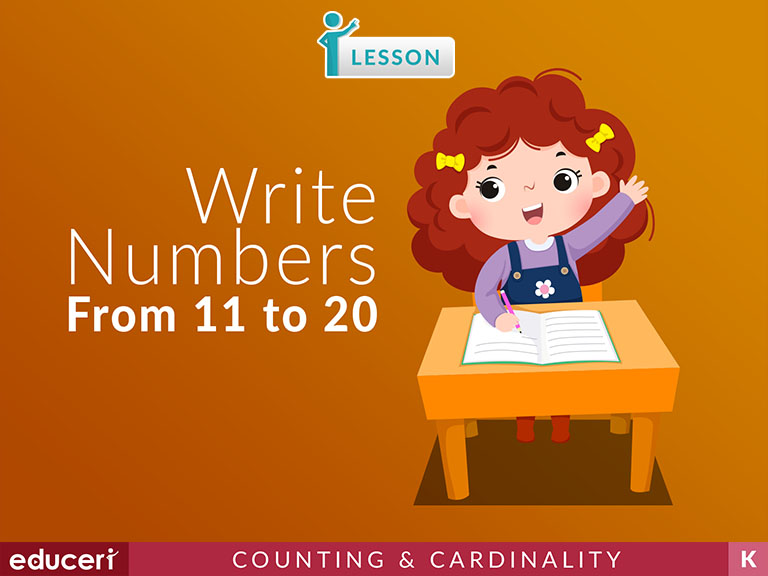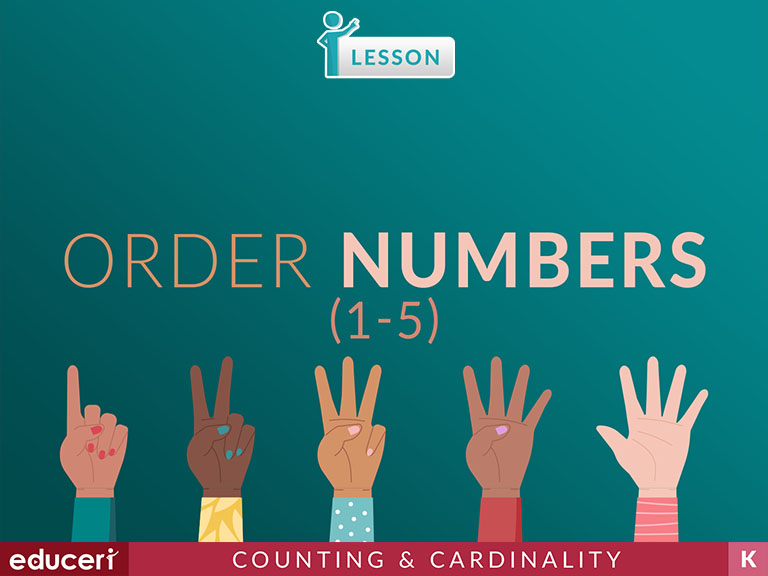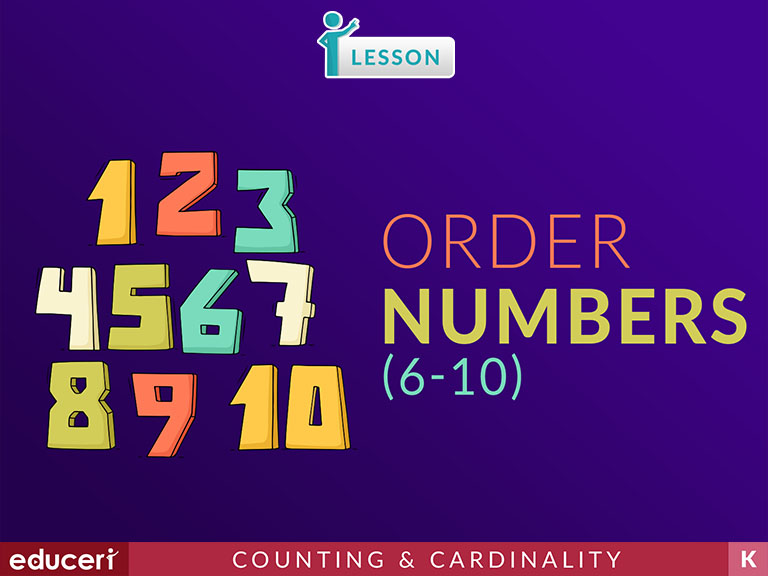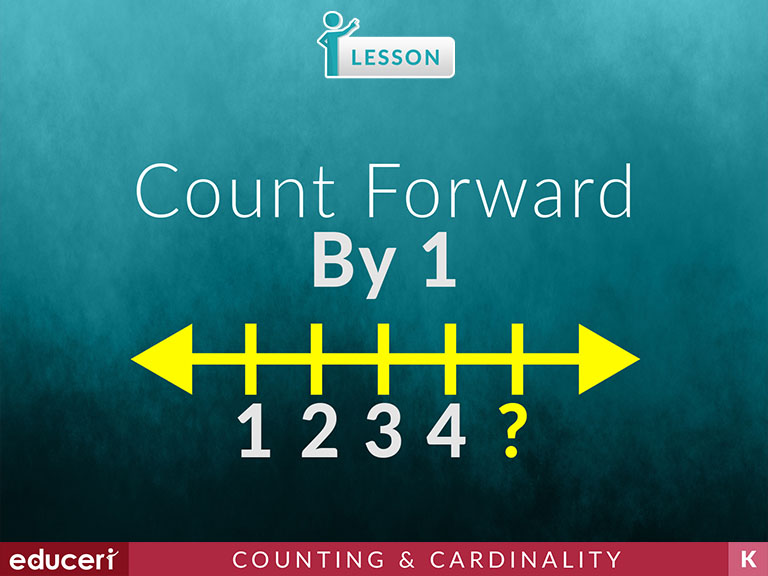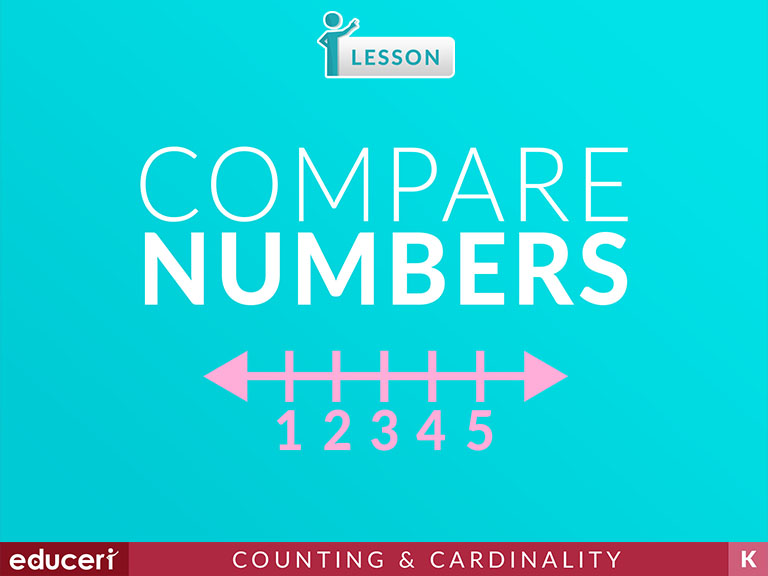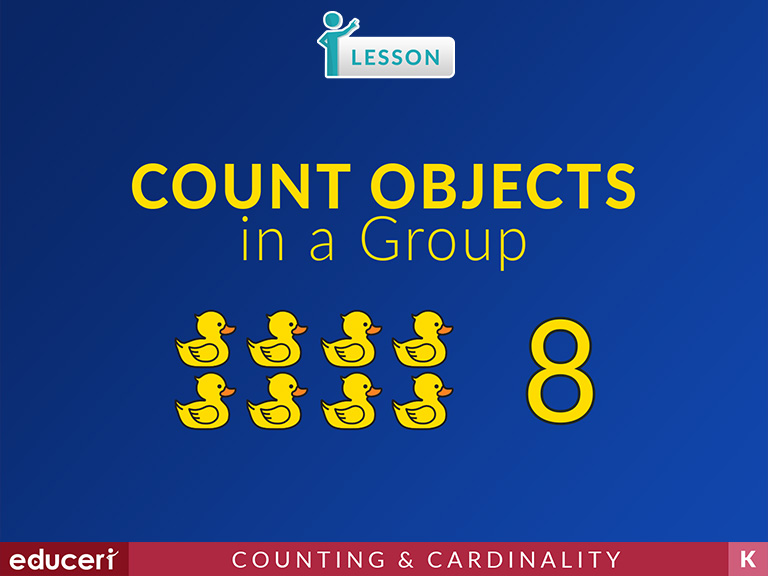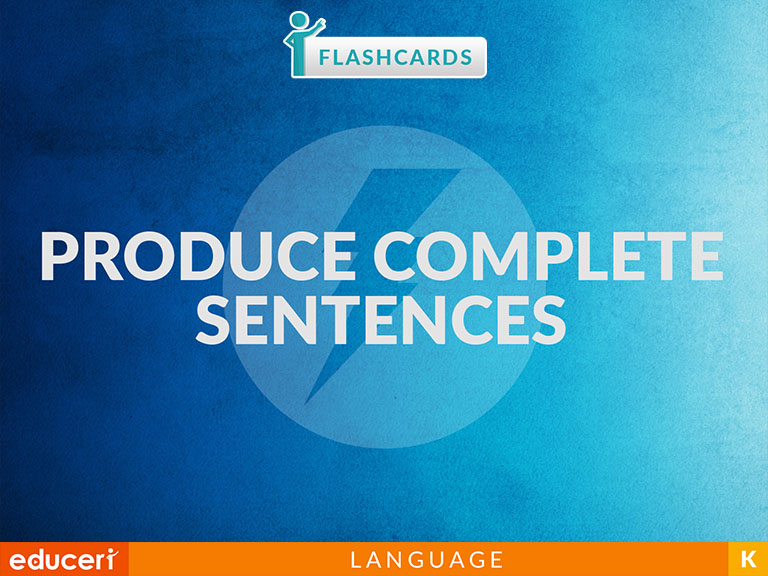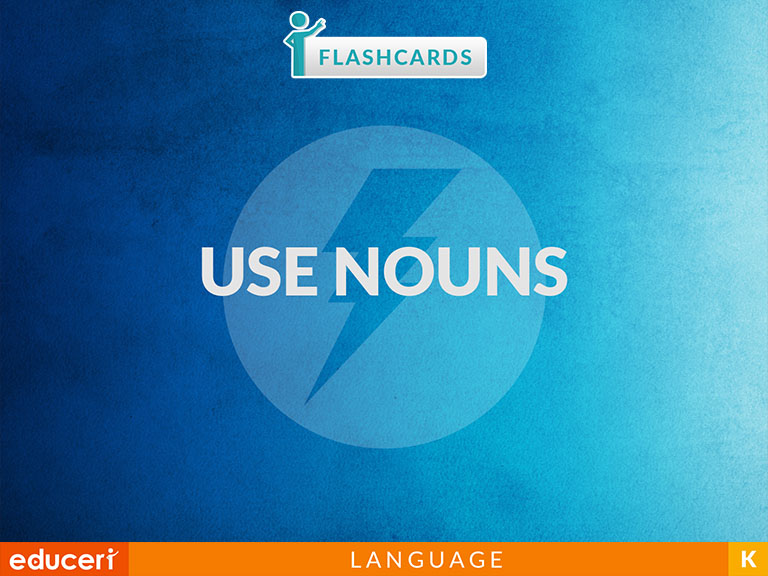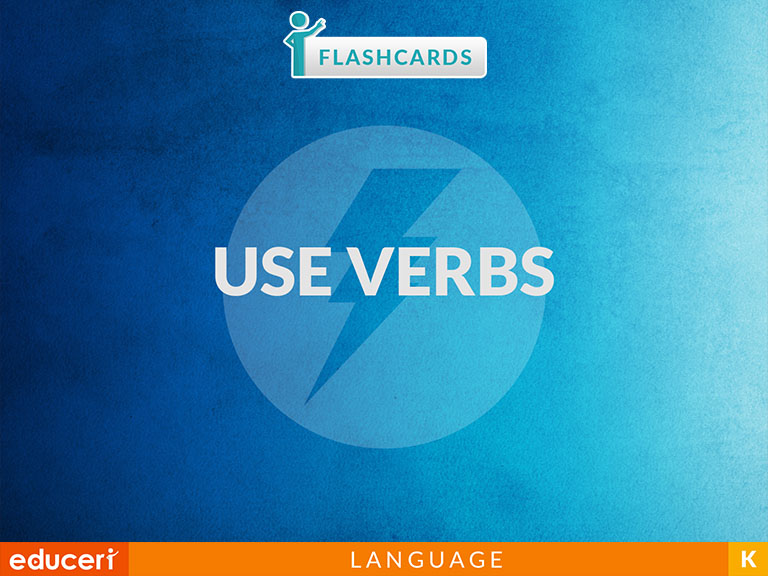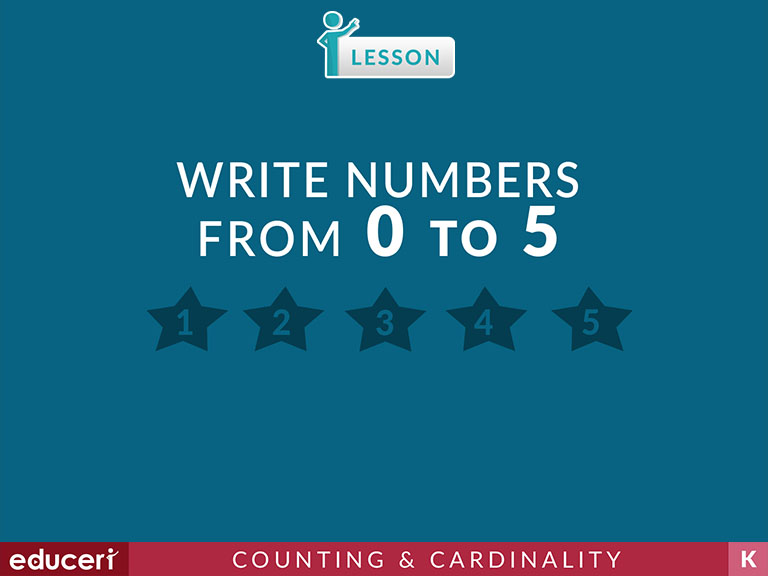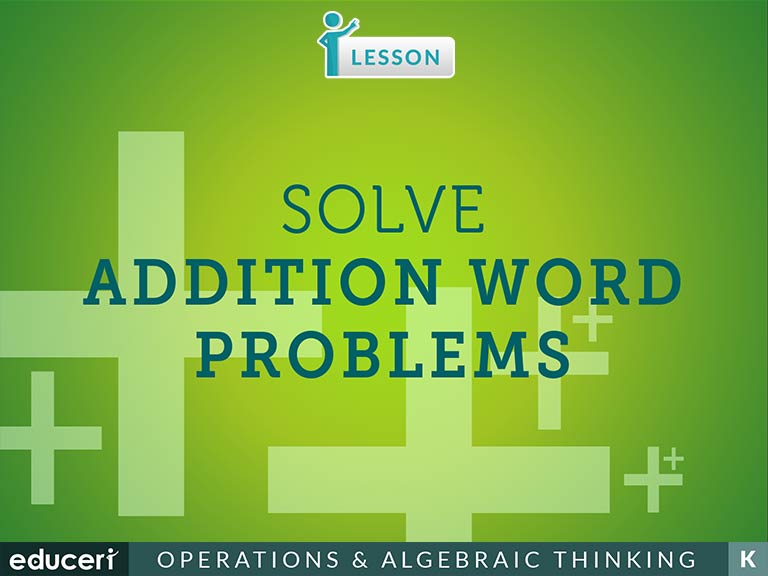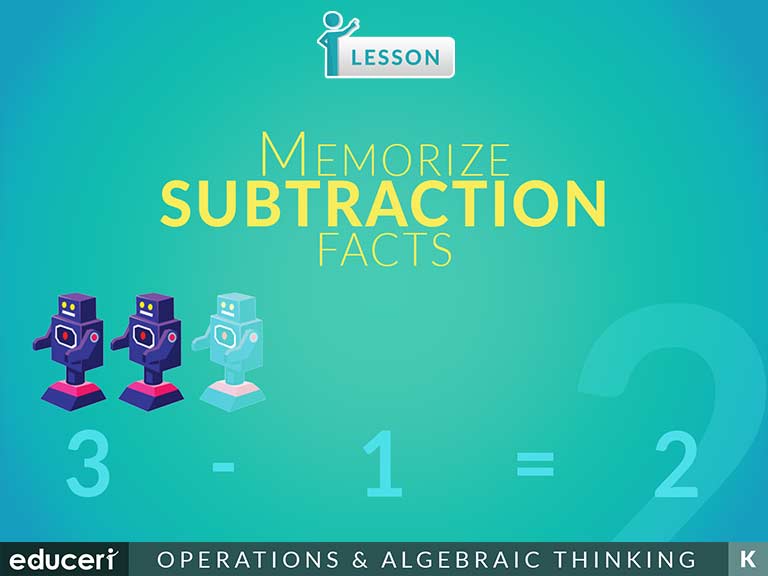All Lessons
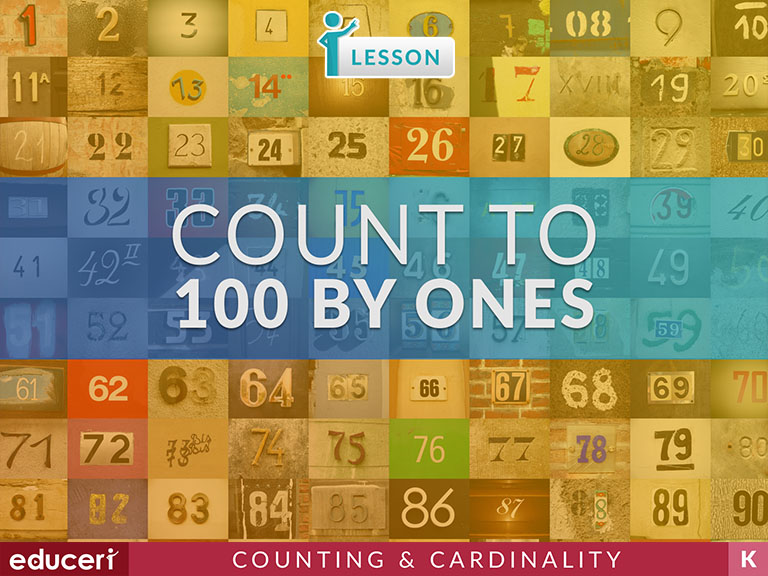
Count to 100 by Ones
(B) Use a problem-solving model that incorporates analyzing given information, formulating a plan or strategy, determining a solution, justifying the solution, and evaluating the problem-solving process and the reasonableness of the solution
1.2.C(C) Use objects, pictures, and expanded and standard forms to represent numbers up to 120
Share This Lesson
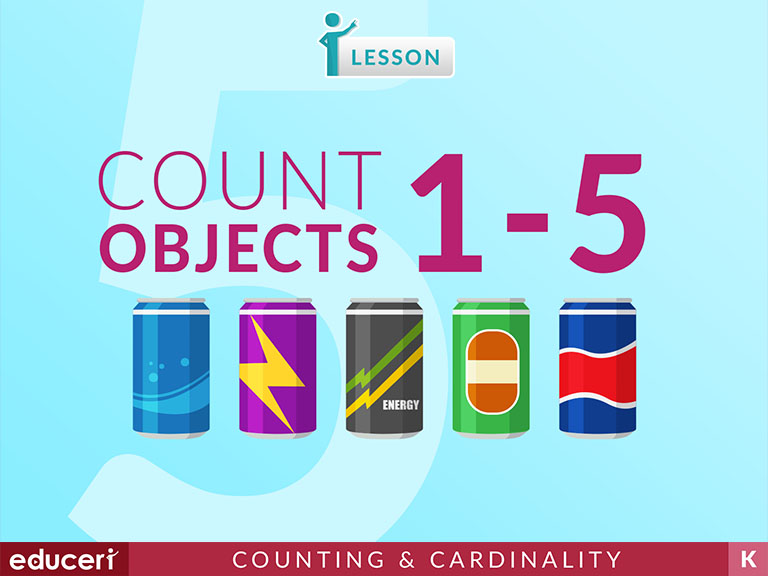
Count Objects (1-5)
(F) Connect number names, numerals and quantities, including zero, initially up to 10 and then beyond (ACMNA002)
ACMNA003(F) Subitise small collections of objects (ACMNA003)
K.CC.4 Understand the relationship between numbers and quantities; connect counting to cardinality.
K.CC.5K.CC.5 Count to answer "how many?" questions about as many as 20 things arranged in a line, a rectangular array, or a circle, or as many as 10 things in a scattered configuration; given a number from 1-20, count out that many objects.
Share This Lesson
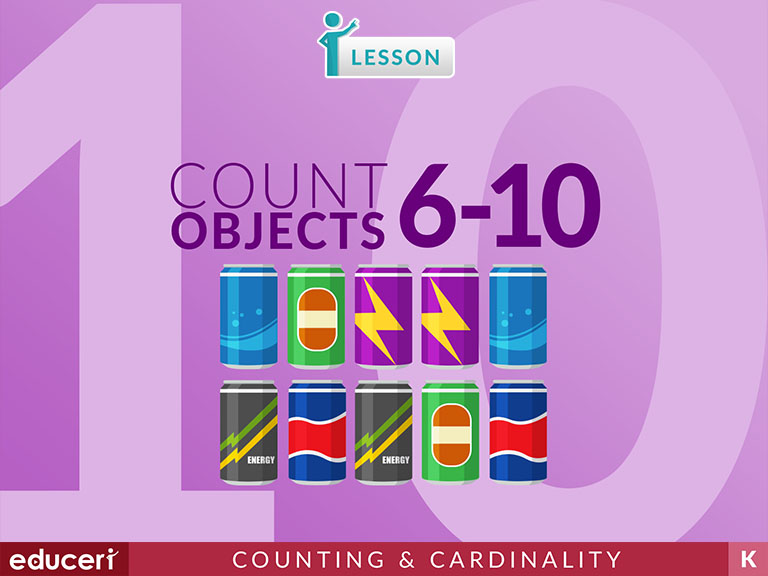
Count Objects (6-10)
(F) Connect number names, numerals and quantities, including zero, initially up to 10 and then beyond (ACMNA002)
ACMNA003(F) Subitise small collections of objects (ACMNA003)
K.CC.4 Understand the relationship between numbers and quantities; connect counting to cardinality.
K.CC.5K.CC.5 Count to answer "how many?" questions about as many as 20 things arranged in a line, a rectangular array, or a circle, or as many as 10 things in a scattered configuration; given a number from 1-20, count out that many objects.
Share This Lesson
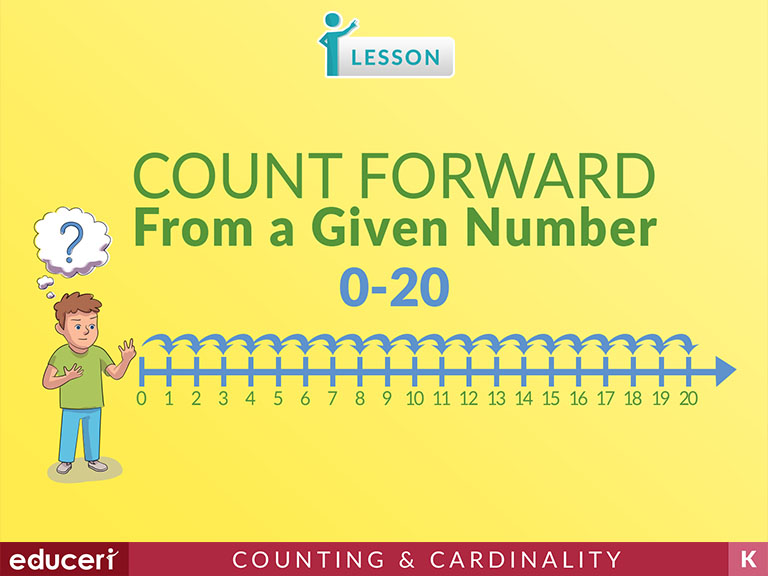
Count Forward From a Given Number
Share This Lesson
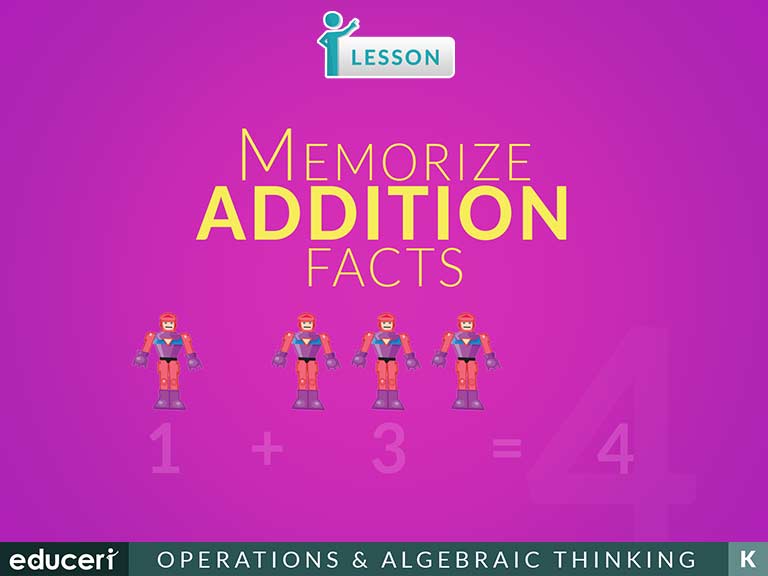
Memorize Addition Facts
This Operations and Algebraic Thinking lesson practices memorizing addition facts. The lesson includes research-based strategies and strategic questions that prepare students for assessments. The goal of this lesson is rote memorization of the addition facts. As a result, this lesson is set up with Skill Development/Guided Practice pages, followed by Independent Practice for each number. Cumulative Periodic Review pages are at the end of the lesson. Flashcards are provided with this lesson.
